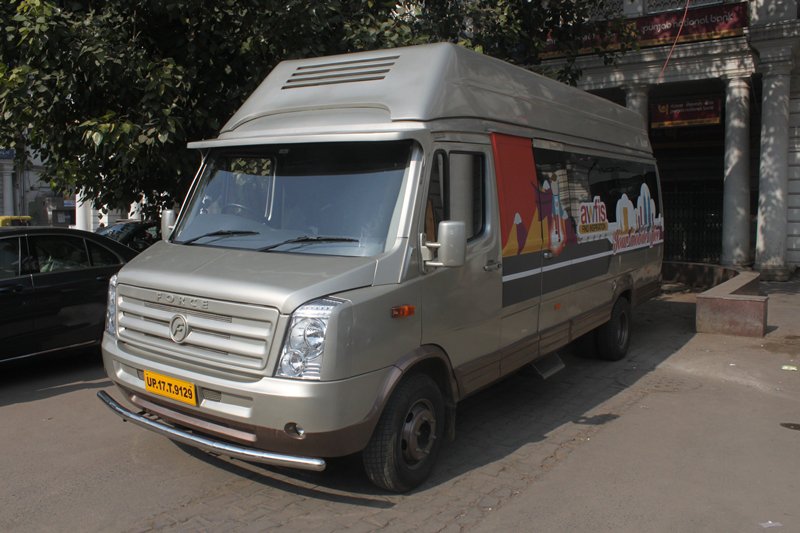
Express Drives: How was the concept of Awfis conceived?
Awfis: We started in July 2015 and the concept was initially to solve what has been the perennial problem in India, which is the ability to find a use of real estate on-the-go where shared space models have become prevalent in taxis, hotels etc. this was an area which lagged in any kind of new innovation. The idea was the ability for people to book a space on -the- move, in a just-in-time basis anywhere, anytime and in any quantity they wanted. We first built the technology platform about 16 months ago and listed ourselves as we call it as ‘low working centres’ which today we have 18 centres in different locations like Pune, Mumbai, , Hyderabad, Bangalore, Delhi and have close to 4,000 seats which are projected to go up to 8,000 seats by March 2017. We provide the convenience, complete transparency in terms of price, complete flexibility wherein a user can book a space from one hour to 11 months or more. There is no security deposit or long term commitment. In addition to the seats, users can also benefit from the different alliances we have where there is a reward programme for example a discount coupon at a Hard Rock Cafe. Next is the locations we have. There is no restriction of an employee of a client wherein he/she can operate through just one centre. Such flexibility with regards to alliances with different outlets benefits not just the founder but everyone.
To give you a perspective, our largest competitor, Regus took about 15 years to come to 9,000 seats and we will get there in less than 15 months from now. By March 2018, we plan to get close to 30,000 seats. Another difference is that we have been able to convert not just the startup community, but SMEs or Small to Medium Enterprises as well, which is the backbone of the business today and some large corporates like FICCI, BNP Paribas, Snapdeal along with others.
Express Drives: Is it restricted to a minimum cap of employees who need to be in an organisation?
Awfis: Whether you want to occupy one seat or 100 seats, the choice is yours as our model offers that flexibility. Because our growth trajectory is fast, we are able to accommodate our clients in one centre or the other. For example, a client came to us and asked for 100 seats the same day. We did not, at that moment, have the requisite number of seats in that location and we asked if another location could work till the time we accommodate. It worked in their favour. In fact, another client had 200 seats in Gurgaon who is now looking at other cities.
So, the ability to expand on the go is only available with a firm such as ours because firstly, we don’t ask for any upfront fees and secondly, because of our growth trajectory and our path, as a client, you will always have enough seats available. In some cases, we have spoken to a large insurance company where they have setup 50 core locations with us. So they will take 50 fixed seats and the remaining, say, 150 seats can be given to other clients. Then 50 locations get setup that way. So, in a crux, changing the paradigm of real estate is what we are doing. Because the consumption of real estate today there are 130 million people working nationwide and considering they would require 100 sq ft of space, you need 1.3 billion sq ft of space. There is a complete mismatch here. Even at 500 million, there is 20 percent vacancy. So, the paradigm is shifting, but the real estate companies are not realising this because it is a large commitment that they do. For them to change on-the-fly is very difficult, but with a model like ours, the paradigm for a client can shift. If I am an SME and I have to accommodate 10 people, I will look for 10 seats. No one would say they need 1000 sq ft. So, that is the paradigm shift is happening.
Express Drives: Coming to the Awfis vehicle, lets take an example of an employee who is travelling from Mumbai to Delhi and then is headed for Jaipur for official work. Can he speak with you and take your 8-seater on-the-go mobile office
Awfis: The vehicle has a national permit and this can be done in the said example. It is as simple as you book a Toyota Innova or any other vehicle from a fleet owner. For four hours the charges are Rs 4,000, for eight hours is Rs 7,500 and so on. All one needs to do is go on to our mobile application, register and book the vehicle. The minimum we book it if for four hours. The most effective use we are currently witnessing people using the vehicle for their meetings as well as their city runabout. In fact, one incidence was a High Court arbitration wherein all members were picked up from different locations who went to the Judge’s house and the arbitration was done in the vehicle. The vehicle is a 26 feet Force Traveller that can seat eight people and has amenities like a washroom, conference area, wireless connectivity etc. all that would be present in an workspace. We are in the process of modifying a Toyota Innova which would be a four seater conferencing space with similar amenities. We are also looking at a Volvo bus which would cater to more people on the move.
Ride Experience: The Force Traveller is a vehicle that can be modified easily to suit a person’s need. Some people who purchase a Force Traveller, do it from the purpose of internal modifications that offers more space and amenities. The vehicle can seat eight people comfortably and amenities including a washroom are a printer, a wireless high speed connection, a television and arrangement of tea or coffee. This vehicle is apt for people who are on the move and want to be productive during their commute rather than spending unnecessary energy on travelling to their work. The concept of Awfis nullifies the situation of an employee to work less effectively and in the process give better results to their employer.
(This Awfis coverage appeared on Express Drives – Auto portal of The Financial Express on February 20 2017 under the headline ” Awfis: Working on the move.” You can access the full story here: http://www.financialexpress.com/auto/gallery/https://www.awfis.com/inspiration/wp-content/uploads/2016/06/shutterstock_3835072871.jpg-working-on-the-move/photos/558076/6/)








